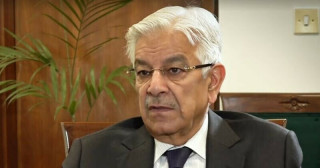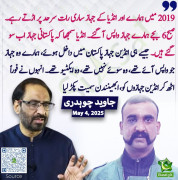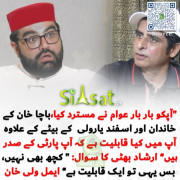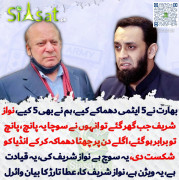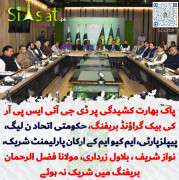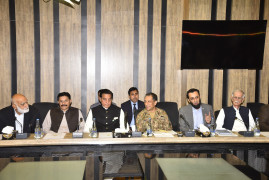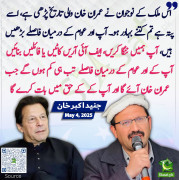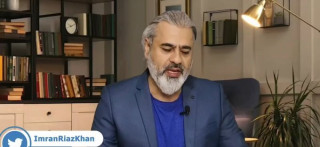Star Gazer
Chief Minister (5k+ posts)
Following are some facts of history for all to read and know that Never in the history of india has it been ruled as a whole land other than Ashoka amd much later the Mughal. So why do th indians think that their land was divided,it was never their land only the land of the people ruling it and most of the great rulers either were Buddhist or Muslims .
The numbers of the kings attending the gatherings mentioned gives you an idea that how big the kingdom of that king would have been.
Some facts from infoplease.com
By 600 B.C., sixteen such territorial powers--including the Magadha, Kosala, Kuru, and Gandhara--stretched across the North India plains from modern-day Afghanistan to Bangladesh. The right of a king to his throne, no matter how it was gained, was usually legitimized through elaborate sacrifice rituals and genealogies concocted by priests who ascribed to the king divine or superhuman origins.
Maurya (mou'uryu) [key], ancient Indian dynasty, c.325c.183 B.C., founded by Chandragupta (Chandragupta Maurya). He conquered the Magadha kingdom and established his capital at Pataliputra (now Patna). His son, Bindusara (d. c.273), and his grandson, Asoka, the most notable ruler of ancient India, for the first time in history brought nearly all India, together with Afghanistan, under one rule. The culture of the Mauryan empire represents the first great flowering of Indian civilization, not to be equaled until the coming of the Gupta dynasty.(infoplease.com)
Harsha (hr'shu) [key], b. c.590, Indian emperor (60647). He became (606) king of a small state in the upper Ganges Valley, and by 612 he had built up a vast army with which he forged nearly all India N of the Narmada River into an empire. An extremely able military leader, his only defeat was at the hands of the Chalukyas, when he attempted (c.620) to invade the Deccan. His capital at Kanauj was an artistic and literary center, and Harsha himself was a distinguished poet and dramatist. A Hindu early in life, Harsha later became a devout Buddhist and forbade the killing of animals in his realm. He built innumerable stupas, established many monasteries, and founded several state hospitals. His great Buddhist convocation at Kanauj (643) was reputedly attended by 20 kings and thousands of pilgrims. The life and times of Harsha are described in the Harsha-charita, a flowery work by Bana, the court poet, and in the Si-yu-ki [records of the Western world] written by the Chinese pilgrim Hsan-tsang. After Harsha's death, N India relapsed into anarchy.
Following are sme excerpts from,http://adaniel.tripod.com/india-past.htm
Different parts of India have different histories and legends. Indians in different parts of the country look at their past from a different point of view than Indians in other parts of India. Indian history has a past of over thousands of years. The Hindus record their religious history at over millions of year. They believe that the world is created and destroyed every few million years. Religious Hindus and some Hindu historians record their present history at over 7000 years. This belief is different from the accepted general history which claims Indian history to be shorter than 5000 years.
In general Indian history different kingdoms were established in different parts of India, some by foreign invaders. The first known invaders of India were Aryans (also mentioned sometimes as Indo-Aryans). It is believed that the Aryans arrived in north India somewhere from Iran and southern Russia at around 1500 B. C. The Aryans fought and pushed the local people called Dravidians southwards. The Aryans are referred to in Indian history as fair skinned people who pushed the dark skinned Dravidians southwards (see also Aryans and Dravidians - a controversial issue
But never in Indian history was there a kingdom that ruled the whole of India. These different kingdoms that were established in different parts in India created different aspects of Indian history for different regions of India.
There were many other empires which were established at different periods in different parts of India and reigned over large parts of India. In south India the Vijayanagar Empire was established in the 14th century. In central India the Bahmani Empire was also established in the 14th century. Alongside with the empires, there were also small kingdoms which ruled on small parts of India. In present day Rajasthan there were many such kingdoms and their rulers belonged to the Rajput caste. The Rajputs even today symbolize the warrior castes of India. These kingdoms sometimes were completely independent and at other times acted as autonomies of bigger empires. Some of these kingdoms came into existence after a collapse of bigger empire and sometimes after a mutiny in a bigger empire. The Bahmani Empire broke up into five kingdoms. The world famous Moghul Empire from the Delhi-Agra region collapsed into many small kingdoms and into Maratha Empire.
The Moghuls are perhaps the most famous of the Indian Empires which ever existed. At their height they controlled the whole of north India, present day Pakistan and large parts of south India. In their empire they had many kings and rulers who were subjected to them. In west India, there were many local rulers who were subjected to the Moghul Empire. These rulers of West India were called Maratha (or Maharatha). Till the Moghul Empire, different Maratha rulers acted sometimes as independent rulers and at other times subjected to different larger kingdoms or empires including the Moghuls.
The numbers of the kings attending the gatherings mentioned gives you an idea that how big the kingdom of that king would have been.
Some facts from infoplease.com
By 600 B.C., sixteen such territorial powers--including the Magadha, Kosala, Kuru, and Gandhara--stretched across the North India plains from modern-day Afghanistan to Bangladesh. The right of a king to his throne, no matter how it was gained, was usually legitimized through elaborate sacrifice rituals and genealogies concocted by priests who ascribed to the king divine or superhuman origins.
Maurya (mou'uryu) [key], ancient Indian dynasty, c.325c.183 B.C., founded by Chandragupta (Chandragupta Maurya). He conquered the Magadha kingdom and established his capital at Pataliputra (now Patna). His son, Bindusara (d. c.273), and his grandson, Asoka, the most notable ruler of ancient India, for the first time in history brought nearly all India, together with Afghanistan, under one rule. The culture of the Mauryan empire represents the first great flowering of Indian civilization, not to be equaled until the coming of the Gupta dynasty.(infoplease.com)
Harsha (hr'shu) [key], b. c.590, Indian emperor (60647). He became (606) king of a small state in the upper Ganges Valley, and by 612 he had built up a vast army with which he forged nearly all India N of the Narmada River into an empire. An extremely able military leader, his only defeat was at the hands of the Chalukyas, when he attempted (c.620) to invade the Deccan. His capital at Kanauj was an artistic and literary center, and Harsha himself was a distinguished poet and dramatist. A Hindu early in life, Harsha later became a devout Buddhist and forbade the killing of animals in his realm. He built innumerable stupas, established many monasteries, and founded several state hospitals. His great Buddhist convocation at Kanauj (643) was reputedly attended by 20 kings and thousands of pilgrims. The life and times of Harsha are described in the Harsha-charita, a flowery work by Bana, the court poet, and in the Si-yu-ki [records of the Western world] written by the Chinese pilgrim Hsan-tsang. After Harsha's death, N India relapsed into anarchy.
Following are sme excerpts from,http://adaniel.tripod.com/india-past.htm
Different parts of India have different histories and legends. Indians in different parts of the country look at their past from a different point of view than Indians in other parts of India. Indian history has a past of over thousands of years. The Hindus record their religious history at over millions of year. They believe that the world is created and destroyed every few million years. Religious Hindus and some Hindu historians record their present history at over 7000 years. This belief is different from the accepted general history which claims Indian history to be shorter than 5000 years.
In general Indian history different kingdoms were established in different parts of India, some by foreign invaders. The first known invaders of India were Aryans (also mentioned sometimes as Indo-Aryans). It is believed that the Aryans arrived in north India somewhere from Iran and southern Russia at around 1500 B. C. The Aryans fought and pushed the local people called Dravidians southwards. The Aryans are referred to in Indian history as fair skinned people who pushed the dark skinned Dravidians southwards (see also Aryans and Dravidians - a controversial issue
But never in Indian history was there a kingdom that ruled the whole of India. These different kingdoms that were established in different parts in India created different aspects of Indian history for different regions of India.
There were many other empires which were established at different periods in different parts of India and reigned over large parts of India. In south India the Vijayanagar Empire was established in the 14th century. In central India the Bahmani Empire was also established in the 14th century. Alongside with the empires, there were also small kingdoms which ruled on small parts of India. In present day Rajasthan there were many such kingdoms and their rulers belonged to the Rajput caste. The Rajputs even today symbolize the warrior castes of India. These kingdoms sometimes were completely independent and at other times acted as autonomies of bigger empires. Some of these kingdoms came into existence after a collapse of bigger empire and sometimes after a mutiny in a bigger empire. The Bahmani Empire broke up into five kingdoms. The world famous Moghul Empire from the Delhi-Agra region collapsed into many small kingdoms and into Maratha Empire.
The Moghuls are perhaps the most famous of the Indian Empires which ever existed. At their height they controlled the whole of north India, present day Pakistan and large parts of south India. In their empire they had many kings and rulers who were subjected to them. In west India, there were many local rulers who were subjected to the Moghul Empire. These rulers of West India were called Maratha (or Maharatha). Till the Moghul Empire, different Maratha rulers acted sometimes as independent rulers and at other times subjected to different larger kingdoms or empires including the Moghuls.

